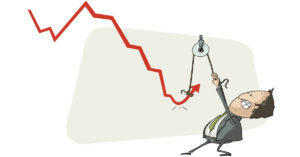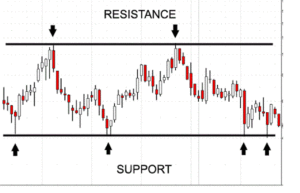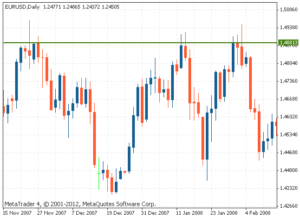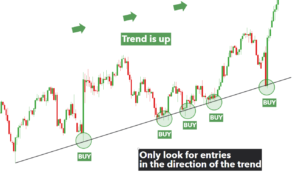A circuit breaker is a mechanism used in the stock market to prevent large, sudden price declines or increases. It is designed to give investors time to assess market conditions, reduce panic selling, and provide stability to the market.
Circuit breakers are triggered when the stock market experiences sharp price movements within a short period of time. The circuit breaker system is designed to halt trading temporarily to allow investors to take stock of the situation, assess market conditions, and reposition themselves accordingly. This mechanism is put in place to prevent large, sudden losses and to protect investors from panic selling.
In India, the Securities and Exchange Board of India (SEBI) has put in place a circuit breaker system that applies to both the National Stock Exchange (NSE) and the Bombay Stock Exchange (BSE). The circuit breaker system has three levels of trigger points based on the movement of the benchmark indices – Sensex and Nifty.
- The First level of circuit breaker is triggered if the Sensex or Nifty moves up or down by 10% from its previous close. If this happens, trading is halted for 45 minutes. This is called the Level 1 circuit breaker.
- The Second level of circuit breaker is triggered if the Sensex or Nifty moves up or down by 15% from its previous close. If this happens, trading is halted for two hours. This is called the Level 2 circuit breaker.
- The Third level of circuit breaker is triggered if the Sensex or Nifty moves up or down by 20% from its previous close. If this happens, trading is halted for the remainder of the day. This is called the Level 3 circuit breaker.
It is important to note that circuit breakers are only activated during trading hours. If a sharp movement occurs before trading hours, the circuit breaker system will not be activated.
The circuit breaker system is intended to give investors a chance to reassess their positions and make informed decisions based on market conditions. It also helps to prevent panic selling and buying that can lead to sharp price movements.
However, it is not foolproof and cannot guarantee complete protection against losses. Investors should always be aware of the risks associated with investing in the stock market and should have a diversified portfolio to mitigate risks.
Benefits of circuit breaker in stock market:
1. Reducing panic selling
The circuit breaker system is designed to halt trading temporarily when there is a sharp movement in stock prices. This gives investors time to assess market conditions and make informed decisions, reducing the likelihood of panic selling.
2. Preventing large losses
Circuit breakers are activated when stock prices move up or down by a certain percentage within a short period of time. This mechanism helps to prevent large losses by giving investors time to reassess their positions and make informed decisions.
3. Promoting market stability
The circuit breaker system promotes market stability by preventing large, sudden price movements that can disrupt the market. This helps to maintain investor confidence in the market.
4. Providing time for information dissemination
Circuit breakers provide time for information dissemination. When trading is halted, news and information can be disseminated to investors, allowing them to make informed decisions.
5. Preventing market manipulation
The circuit breaker system can prevent market manipulation by preventing sudden, large price movements that can be caused by manipulation.
6. Encouraging long-term investing
The circuit breaker system encourages long-term investing by reducing the likelihood of panic selling and providing a stable market environment.
Disadvantages of circuit breaker in stock market:
1. Reduced liquidity
When trading is halted due to the circuit breaker system, it can reduce liquidity in the market, making it harder for investors to buy and sell stocks. This can lead to increased volatility and wider bid-ask spreads.
2. Market inefficiencies
The circuit breaker system can lead to market inefficiencies, particularly if trading is halted for an extended period of time. This can result in price distortions and may prevent the market from reflecting accurate prices.
3. Uncertainty
Circuit breakers can create uncertainty among investors, particularly if they are triggered frequently. This can lead to increased volatility and decreased investor confidence.
4. Unintended consequences
Circuit breakers can have unintended consequences, particularly if they do not function as intended. For example, they may fail to prevent large losses or may be triggered too frequently, leading to increased volatility.
5. Time delay
The circuit breaker system introduces a time delay into trading, which can be problematic for investors who need to make quick decisions. This delay can also prevent the market from reacting quickly to news or events.
In conclusion, circuit breakers are a mechanism put in place by stock exchanges to prevent large, sudden price movements and to protect investors. They help to provide stability to the market, reduce panic selling, and give investors time to assess market conditions.
Also Read | List of Stock Exchange in India





















